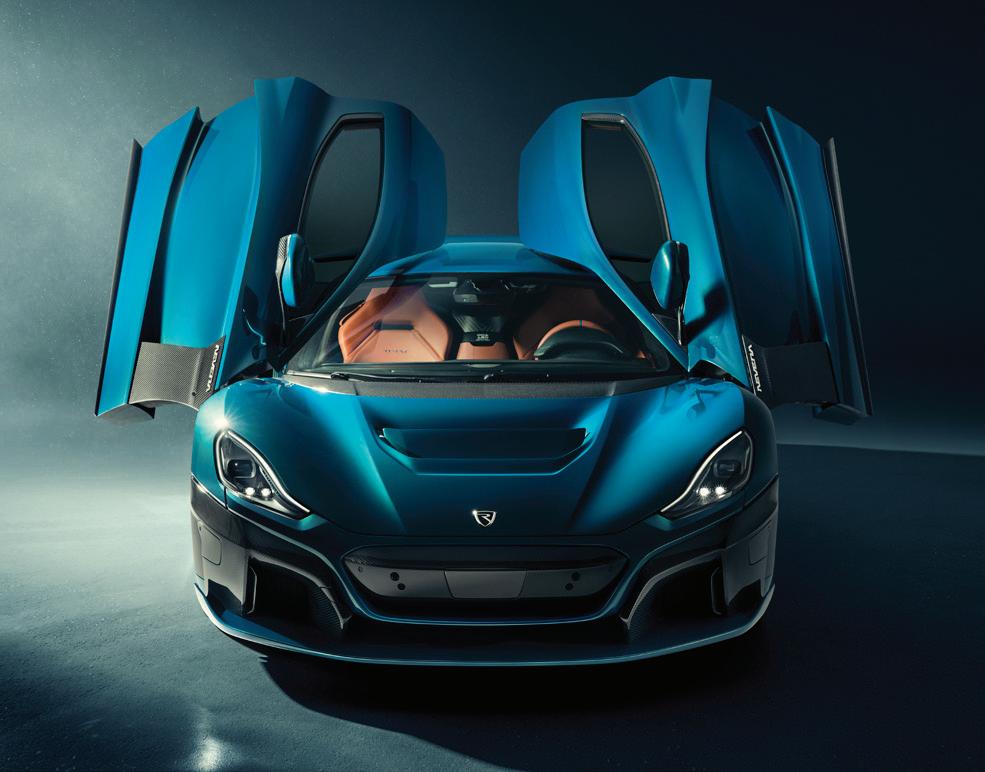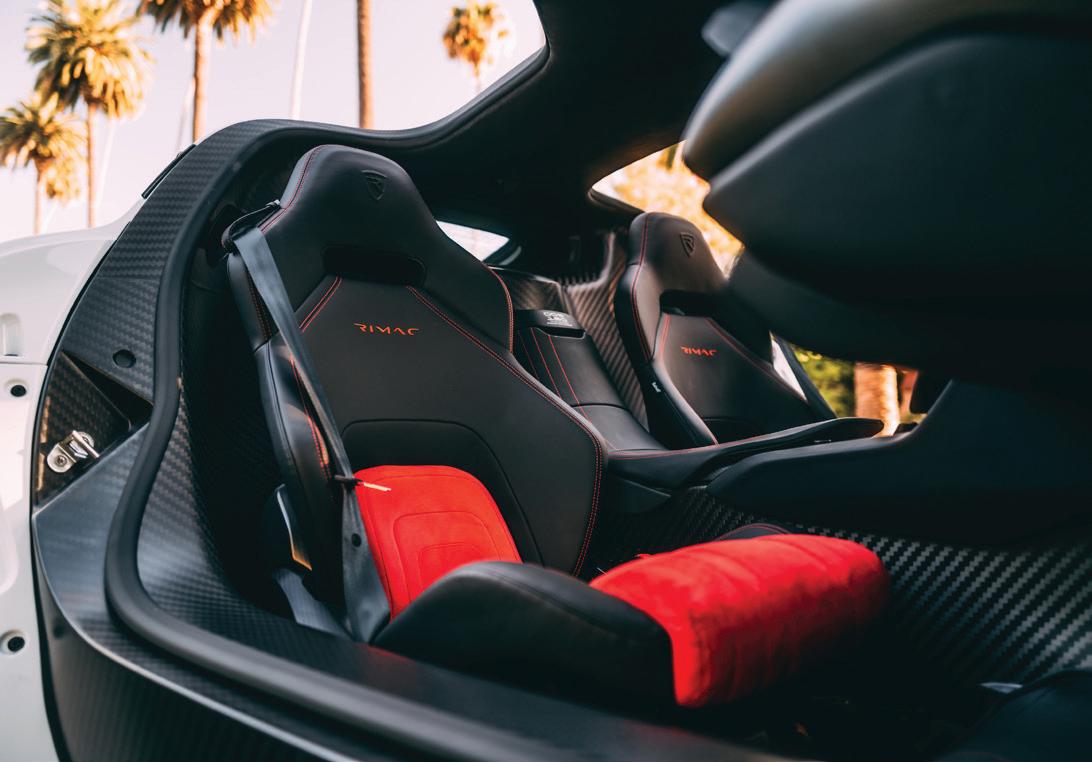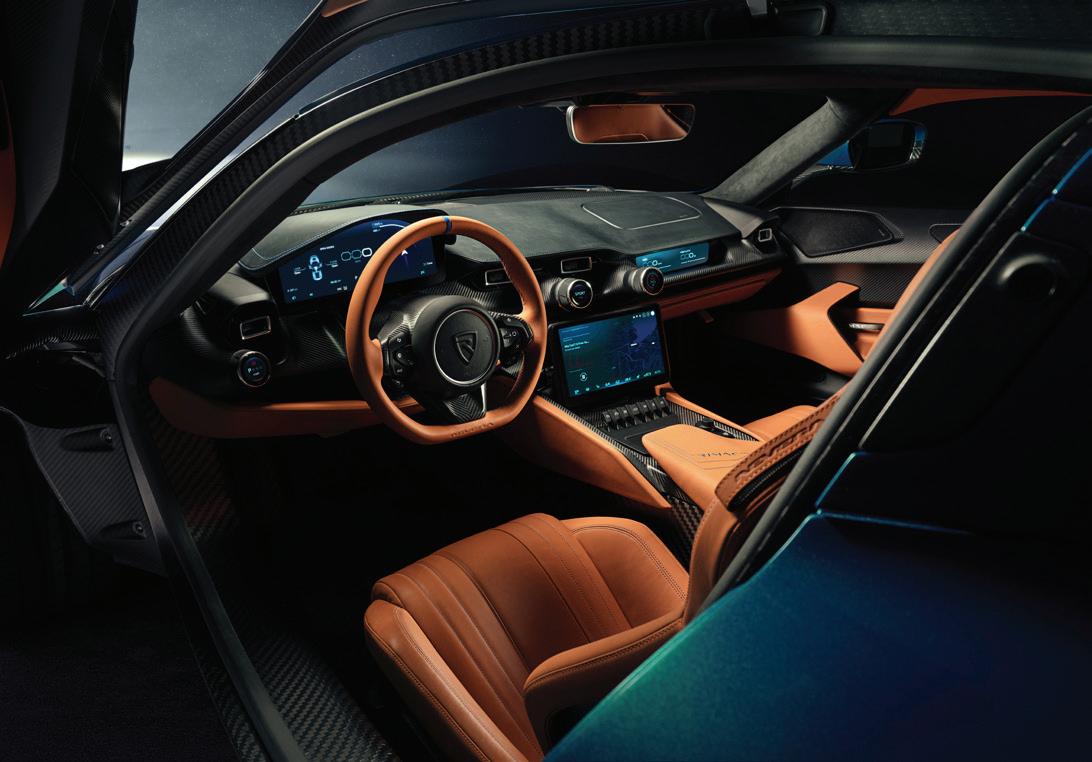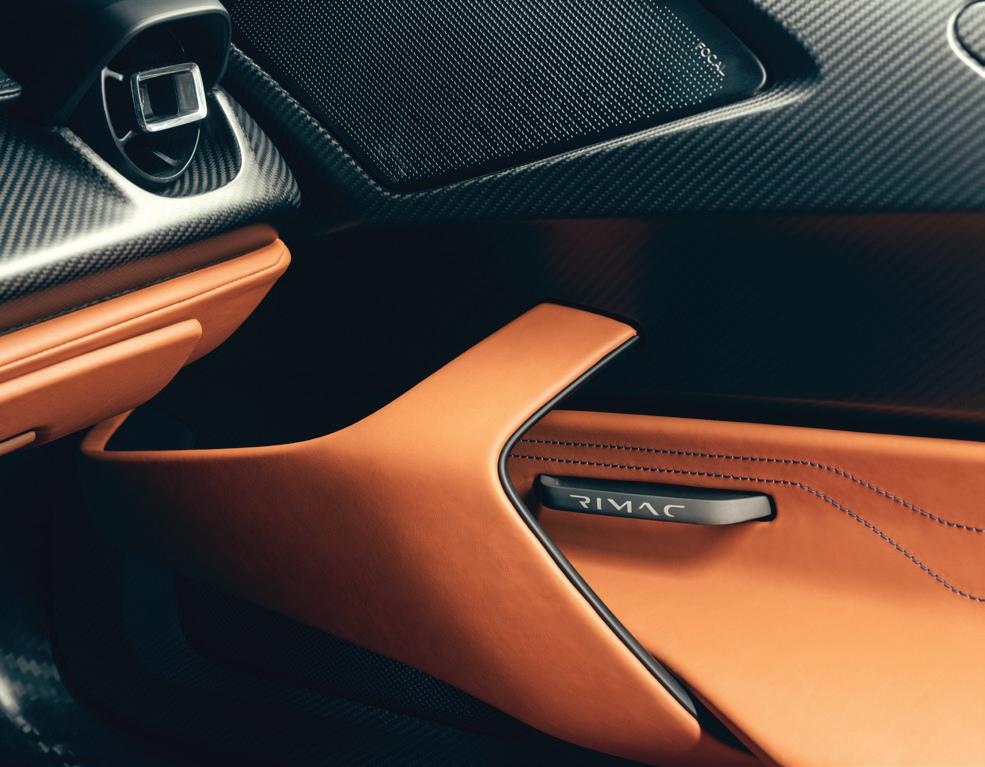
4 minute read
CIVILIZED EXHILARATION
from one
by Nikola Mojic
Rimac starts deliveries of Nevera, its first production model
The production version of Rimac Nevera made its U.S. debut at The Quail, A Motorsports Gathering during Monterey Car Week this August. More significantly, the event follows the start of Nevera deliveries to its customer. First on the list is the 2016 F1 World Champion Nico Rosberg, who received his Nevera with the serial number #001.
At the event, Mate Rimac, Founder and CEO of the Rimac Group, said: “We’ve been coming to Monterey Car Week for years, showcasing our first car – Concept_One –and then the gradual development of C_Two into its final production form as Nevera.
“This year’s appearance at The Quail is undoubtedly our most significant yet; the clearest indication that the promises we have made in five years of development have all been fulfilled and exceeded; the world’s first all-electric hypercar – and the fastest accelerating production car – is now ready to be shipped to customers all over the world.”
It was a little over a year ago that the Croatian electricmobility technology specialist and subsequent hypercar manufacturer Rimac Automobili unveiled Nevera, the production-ready iteration of its Rimac C_Two concept car.
Since it was first presented to the world at the International Geneva Motor Show in 2018, the C_Two has been refined at every level during an extensive development program that led to the Nevera, with most of its key components developed in-house at Rimac’s HQ in Croatia.
“This is it. This is the car I had in mind when I embarked on the ‘impossible’ journey ten years ago,” said a proud Mate Rimac, the eponymous company’s Founder and CEO, following the unveiling of Nevera. “When we first revealed the C_Two, we set our targets extremely high. There was nothing else that could even come close to matching the car’s cutting-edge electric powertrain and extreme performance. But for us, that was only the starting point.
“With its combination of everyday use and 1914hp performance, the Nevera proves what is possible when there are no restraints placed on technology, development, or ambition.”
The cars are being produced at Rimac’s new production facility on the outskirts of Zagreb, Croatia. Underlining his own commitment to the project, Mate will personally test and sign off each of the Neveras, before they are delivered to customers.
Nevera is the name of a Mediterranean summer storm off the coast of Croatia, known for its unpredictability. Which is quite apt for a car designed to “transform from a comfortable, adept grand tourer into a pin-sharp performance machine in the blink of an eye.”
To deliver that kind of versatile performance, Nevera possesses around 1,900hp produced by four Rimacengineered electric motors. They can propel the hypercar from 0-100kmph in just 1.97 seconds, and to 300kmph in 9.3 seconds. The top speed is reported to be 412kmph.
“Lean and effective engineering,” the philosophy behind Nevera’s development, has been applied to every aspect of the car, according to the automaker. Nevera’s bodywork, bonnet, pillars, diffusers, intakes, splitters and radiators have undergone refinement from those on the C_Two concept, resulting in a 34 per cent improvement in aerodynamic efficiency.
Changes to the inlets and cooling channels have improved the cooling efficiency of both the brake and powertrain systems by 30 per cent at low speeds and a seven per cent enhancement at high speeds. The aerodynamic design of the lightweight forged alloy wheels channel cooling air to the Brembo carbon-ceramic braking system.
Nevera’s monocoque, the structural core of the car, includes a bonded carbon roof, integrated structural battery pack and rear carbon subframe. It is the largest single carbon fibre piece in the automotive industry, but weighs less than 200kilograms. It encases the car’s battery to form a compact yet incredibly strong structure with a torsional stiffness of 70.000 Nm/degree, which translates to the most rigid structure in a production car.
The unique H-shaped, liquid-cooled, 120kWh, Lithium/ Manganese/Nickel battery can produce 1.4MW of power. Completely designed and produced in-house, it adds 37 per cent structural stiffness to the carbon fibre monocoque. The battery’s optimum positioning, low and central within the car’s floor, also contributes to a very low centre of gravity. This also helps create an excellent 48/52 front-to-rear weight distribution.
Capable of instantly summoning maximum torque from the first moment, the four surface-mounted permanent magnet motors drive the Nevera’s four wheels individually. The front and rear wheels are each connected to a pair of single-speed gearboxes. Moreover, Rimac’s All-Wheel Torque Vectoring 2 (R-AWTV 2) system - in conjunction with its electronically controlled double wishbone suspension - delivers variable dynamic responses to road and track conditions by making over 100 calculations per second.
“Depending on the driving mode selected, the R-AWTV 2 technology can enable the Nevera to be drifted sideways or provide optimum levels of all-wheel-drive grip, traction and safety – no matter how challenging the road and weather conditions,” says Miroslav Zrnčević, Rimac Test and Development Driver. “Thanks to a four-individualmotor drivetrain, the driver can also change the torque distribution, and personalize the performance delivery even further, for a completely bespoke drive – ranging from front- to rear-wheel-drive biased car.”


Nevera’s innovative electric power steering has a steerby-wire function, enabling adaptive driver feedback based on the six drive modes - Comfort, Range, Sport, Drift, Track and two Custom modes that enable drivers to access their personal, pre-selected performance preferences. Additionally, the steering also works as a driving-aid system when in Driver Coach mode, which demonstrates optimum racing lines and vehicle control to the driver.
Nevera is designed to be as much a capable grand tourer as it is a performance hypercar. Nevera’s interior space has room for two occupants in full race regalia, as well as their luggage. The cockpit layout is divided into two zones featuring a trio of high-definition TFT screens. The focus of the top segment is driving pleasure and performance, while the lower part houses the infotainment system, comfort controls and driving data. Tactile inputs are limited to a few aluminium rotary controls and switches.

The Rimac M2M system delivers a wealth of realtime anonymized performance data to the manufacturer as well as to the owner through an intuitive mobile app developed in-house. Nevera’s owners can track live data, such as GPS location, charging speed and battery status, while also using it to analyze driving performance, metrics and map previews on Android & iOS.
It is highly unlikely that two identical Neveras will leave the Rimac factory, given the comprehensive range of customization options. In addition to the company’s premium individual personalization program, Rimac will offer its flagship in various editions - GT, Signature, and Timeless - or the customers can choose to go completely Bespoke.
Nico Rosberg, the former F1 champion who these days drives and reviews some of the most extreme cars for his YouTube channel, had these words to say about the acceleration of his recently delivered Nevera #001: “That is incredible acceleration... I have never experienced anything like that.”
He also observed: “It’s very, very enjoyable because you can drive it in a way where you don’t necessarily notice the extreme performance, but then, you can also extract the extreme performance when you want.”










